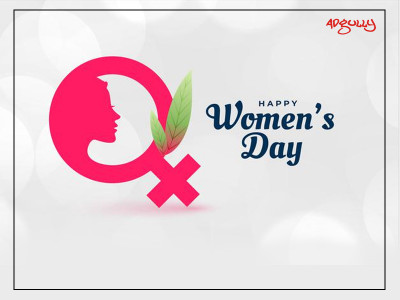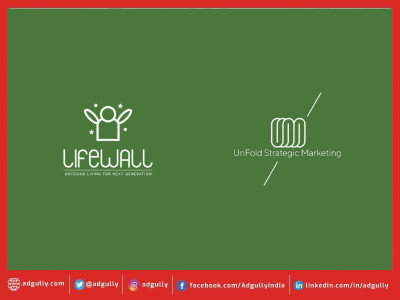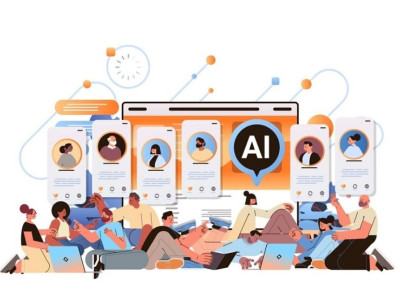How brands are breaking through gender stereotyping in ads
From an early age we had been seen women in the role of a mother busy in the kitchen whipping up the perfect meal for her family, a docile wife dependant on her husband for a secure financial future, a sister looking up to her brother for protection or a daughter being groomed to follow her mother’s footsteps. This, we saw in our daily lives and also reflected in our films and brand communication.
Not any more.
Today, we see detergent brands urging husbands and sons to share the laundry and household chores load, a noodle brand showcasing a mother preparing her son to be adept in kitchen work as well, jewellery brands that celebrate different facets of womanhood, brands breaking through the period taboo and many, many more examples.
From portraying women either in traditional roles or as arm candy in some really regressive deo/ innerwear/ umpteen other ads, brands today are giving a more empowering message when it comes to depicting women in ads, and also while addressing the women TG.
On the occasion of International Women’s Day, Adgully spoke to a cross-section of industry experts on how brand communication has evolved today in terms of addressing the women TG. Here’s what they had to say...
Pulkit Agrawal, Co-Founder, Trell:
“In the past few years, the portrayal of women in brand communication has definitely evolved. Brands and content creators are constantly working towards narrowing the apparent gender stereotypes. The trend has shifted from the portrayal of women only as a care-giver, like a mother, a daughter, or a sister to powerful roles. People have often spoken up about this and we are seeing changes now. We at Trell, India’s largest lifestyle social commerce platform, are trying to build this narrative further by celebrating womanhood this International Women’s Day and applauding the Superसà¥à¤¤à¥à¤°à¥€ in our lives by launching a women-centric fest filled with a myriad of engaging activities across 8 languages, Trell’s Superसà¥à¤¤à¥à¤°à¥€ campaign aims at giving users the right platform to celebrate the women in our lives creatively.”
Naina Ruhail, Co-founder, Vanity Wagon:
“There are quite a few brands redefining the brand communication ideology by keeping it real. For instance, at Vanity Wagon we did a #Loveyourskin campaign, wherein real women shared their no-filter selfies, showing off their skin and celebrating it. The campaign was a success and was initiated in a quest to make the women feel more connected to realism. Another example that I can think of is ‘Sabyasachi, Every bride’s dream!’ The designer started a revolution to use plus-size women as a muse to exhibit his collection. This campaign shook the Indian fashion industry to be more inclusive in terms of size and skin tone.”
Ritika Jatin Ahuja, COO, Big Boy Toyz:
“We are instilled with gender stereotypes from birth, leading us to believe things like ‘all men like cars and sports’, ‘all women like shopping and reality television’, and so on. Gone are the days when only men were concerned with automobiles; now, women actively engage in the process of purchasing a vehicle. Their decision has a huge effect on this. When it comes to family cars, female choices are mostly preferred and they know exactly what car will be suitable to their family. Even males tend to take the advice of the women while buying a family or any other car.”
Shikhee Agrawal, AVP, Kiehl’s India:
“Many companies are running commercials in which women are seen not only doing housework, but also shaping their careers while taking care of the families. Companies have realised that in order to reach women, especially in Indian markets, they no longer need to rely on the stereotype of women doing housework. By portraying women as multi-taskers , it makes an emotional connection with the audience. As we all know, social media sites are the most successful way to target millennial, and marketers have taken advantage of this by working with female influencers to reach this group. Social Media marketing is being dominated by female influencers only. These female influencers usually draw a female-dominated audience, making these influencer networks perfect for brands seeking to tap into female buying power.”
Anurag Avula, CEO, Shopmatic Group:
“Good advertising and good brand communication have always been reflections of what’s truly happening in the real world. What used to be stereotypical portrayals of women earlier, have now slowly transformed into portrayals of women with intelligence, emancipated points of view, equal say. Some of you will recall the ‘Lalitaji’, ‘Mera Wala Pink’ kind of advertising depicting intelligent, thrifty, ‘opinionated’ women. Those have been celebratory markers of how society was changing or wanted women to change.
On the other hand, we’ve also seen the Bell Bajao kind of advertising that puts pressure on society to not allow women to be treated badly and to fight against realities like domestic violence. Today, advertising has evolved greatly to showcase women of substance, doing interesting things with their lives, being known for entrepreneurial pursuits and wanting to maximise their participation in multiple aspects of life. The narratives have gone beyond just growing up, marrying, having kids and keeping the fires burning at home to women being seen to make the most of life, drinking in all kinds of rich experience, for themselves and their families. And, it’s great to see stories of women from urban and rural areas thrive! While we see a lot of great stuff happening in communication, we still have some way to go to see women in life realise all the opportunities that exist. Women influence is only going to continue to grow in the years to come and it will be great to see their progression mapped across all kinds of communication formats.”
Akanksha Jain, Head - PR & Communications, BharatPe:
“The brand communication has evolved a lot from a women TG perspective over the last few years and more so since 2020. Brands have given up on gender stereotyping and evolved to focussing more on communicating about their overall purpose. From a pure-play sales pitch, the brand communication has evolved to be more positive and with a larger emotional connect. Lastly, brands have been using inspirational stories of successful women to connect better with women TG. One example of this is Apple’s ‘Behind the Mac’ ad that was primarily a slideshow of images of the most inspiring women from all over the world.”
(https://www.youtube.com/watch?v=2iRWCFetoxg)
Jigyasa Kishore, Senior Director – Brand, Growth & Excellence, Moglix:
“In small pockets, we are starting to see authentic brand communication, which talks about the societal and cultural norms which disproportionately affect women negatively – such as the #ItsNotOk campaign by Truecaller. A few brands are also starting to show a mirror to a changing society as well, new roles and new family structures. For instance, the Facebook Diwali Ad normalised a young enterprising woman running her own family business. But we have a long way to go. Many brands still participate in tokenism or stereotyping, casting women only in the domestic sphere, as a mother or wife figure. Some brands go the other route, glorifying women’s stories of sacrifice or achievement. In future, we hope, women and men will be shown as human and each having their unique nuances, not just as gendered beings.”
Naina Aggarwal Ahuja, Founder and COO, Talking Point Communications:
“Brand communication must now revolve around letting people know why they must use a product and service and how it will help them, instead of, telling them about how it will be good to buy it. Another crucial thing is to remember that these are challenging times for all, and as humans, people tend to seek support and validation. Communication has to be built in a way that the brand image is of a support mechanism and not the sell-sell push. Above everything else, as communicators, we need to go with our intuition and innovate constantly to ensure relevancy and impact. Organisations are increasingly realising that inclusivity and gender diversity have positive impacts on brand equity.”
Deepa Sasidharan, Head - Corporate Communications, Continental Automotive India:
“This has led to conscious efforts towards gender-neutral communication within organisations, sensitisation on stereotyping (e.g. in advertisements), tonality of communication, unconscious biases, etc. Futuristic brands don’t split their target audience into water-tight compartments of gender. They communicate to people, acknowledge the differences and understand the difference between commitment to inclusivity and tokenism. This makes all the difference, and such brands create content that is authentic and resonates with all target groups. Of course, the trend is still evolving, but it is heartening to see brands graduate from shallow messaging to serious discourse.”
Paritosh Kataria, Head - Marketing, Care Health Insurance:
“One of the principal objectives for a brand is to build a relevant association with its pre-defined target audience and thereafter consistently work towards building trust and confidence. As understanding of consumer groups continue to evolve, we are witnessing an increasing trend of gender-neutral communication. The advent of specific products for women, such as health & wellness services and maternity products, and their relevance in the household’s decision making process, have encouraged insurers to take a universal approach to communication as opposed to male-skewed messaging.”
Neha Motwani, Founder and CEO, Fitternity:
"Today, brands have creatively pushed the envelope by launching campaigns that celebrate womanhood and encourage them to be strong, independent, and powerful. Earlier, brands used to portray women based on their roles they are conditioned to to follow, however, the ideologies have changed over the decade, and brands are taking the active step in breaking the stigmas & welcoming the change by imparting values to spread awareness.
The focus has shifted towards women empowerment, educating girls, gender equality, and sanitation among others. Brands today have been producing encouraging women-centric campaigns like the Dove’s #StoptheBeautyTest, fbb's #BuraNaKhelo, and #WithinHerReach by Uber to celebrate today's women and have been sparking up conversations in this space that haven't been talked about before."





























Share
Facebook
YouTube
Tweet
Twitter
LinkedIn